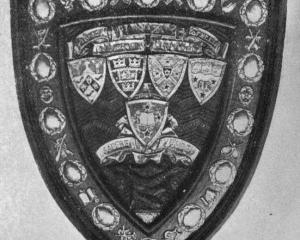Official: Troops have arrived in Dublin from Belfast and England. Martial law has been proclaimed in Dublin County.
The Government is acting drastically. Mr Asquith announced in the House of Commons that the troops had occupied St Stephen's Green. Mr Asquith read the following statement:- ‘‘Troops have occupied Liberty Hall and St Stephen's Green. The Government is taking action to arrest all concerned. The country outside Dublin is tranquil, and only three minor disturbances have been reported. The Government is sending full and accurate information to our friends abroad, showing the real significance of this most recent of the German campaigns. - (Cheers.) The Government is proclaiming certain Irish associations to be illegal. It is understood that the rebels had no machine guns. Lord Wimborne (Lord-Lieutenant of Ireland) has been in Ireland throughout the disturbance, and has taken a very active part in quelling it.''
Replying to Sir E. Carson, the Prime Minister said that all news from Ireland was at present being censored.
There was no reason to believe the banks were not safe. Mr Birrell, Chief Secretary for Ireland, said that the censorship had been imposed to prevent neutrals from receiving a false impression of events.
■A number of members of the Dunedin Field Club turned out for the fortnightly ramble on Easter Monday, the holiday enabling the whole day to be utilised. The route chosen was from Duke street to the reservoir, up the bush track to Flagstaff, and thence to Swampy Hill. The mixed forest ceases on Flagstaff at some 1500ft, then comes a zone of shrubs, and afterwards the tussock grasses.
In the early days, when roads did not exist, this open tussock land provided the only route by which cattle could be sent north or south. After luncheon the party made for Swampy Hill.
The botanical members of the party were rewarded by renewing their acquaintance with such alpine plants as Forsteri bidivillii, Pentachondra pumila, Gentiana montana, and Drapetes dieffenbachii.
The first-named was in fruit, and the others in flower. Other belated flowers were found on a buttercup, on Vittadinia australis, Lagenophora forsteri, Cassinia fulvida, and Veronica buxifolia.
Occasionally a spear grass (Aciphylla) was met with, while the mountain forms of Coriaria (tutu) and the prostrate tree fern Alsophila collensoi were plentiful.
■The far-reaching effects of the New Zealand dairy industry are evidenced by the fact that something like two million feet of white pine timber are felled each year from the great inland bush skirting the Main Trunk line, and are subsequently milled, dressed, and converted into butterboxes and cheese-crates by the Egmont Box Company, the capital for which has been subscribed by the dairy factories of Taranaki.
At present there are about 130 men employed in the timber portion of the business, and at Ohotu, where the sawmill stands, there is quite a rising township.
■It has been suggested to the Minister of Railways by a well-known Hastings resident (says the correspondent of the Napier Telegraph) that the railway locomotives in this dominion be each given a patriotic name, to perpetuate some of the events of the great war.
In many parts of Great Britain the leading railway companies have named their locomotives after generals and places connected with the great Allies. The Minister has replied stating that he is going to give the suggestion favourable consideration.
- ODT, 28,4,1916
COPIES OF PICTURE AVAILABLE FROM ODT FRONT OFFICE, LOWER STUART ST, OR WWW.OTAGOIMAGES.CO.NZ












